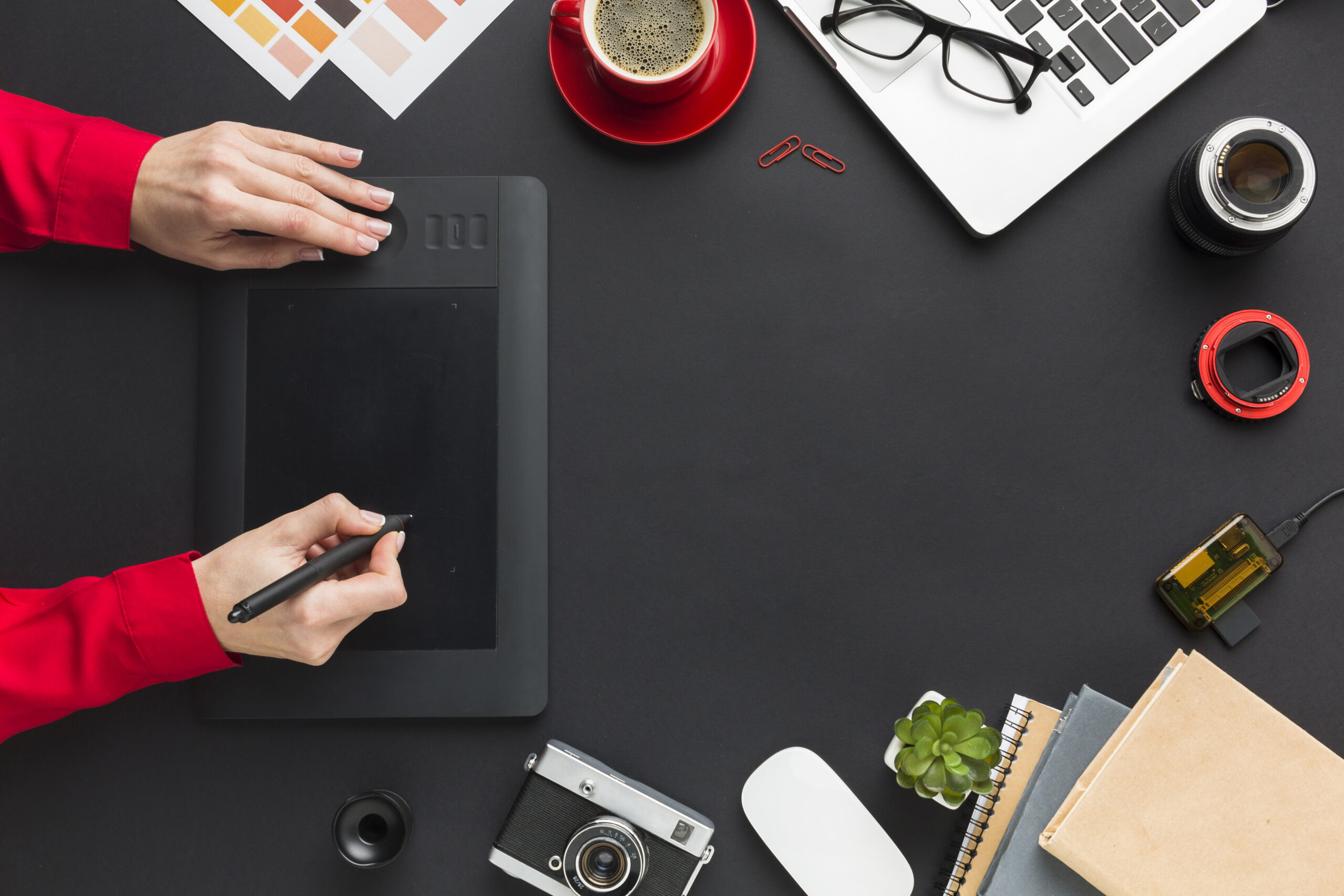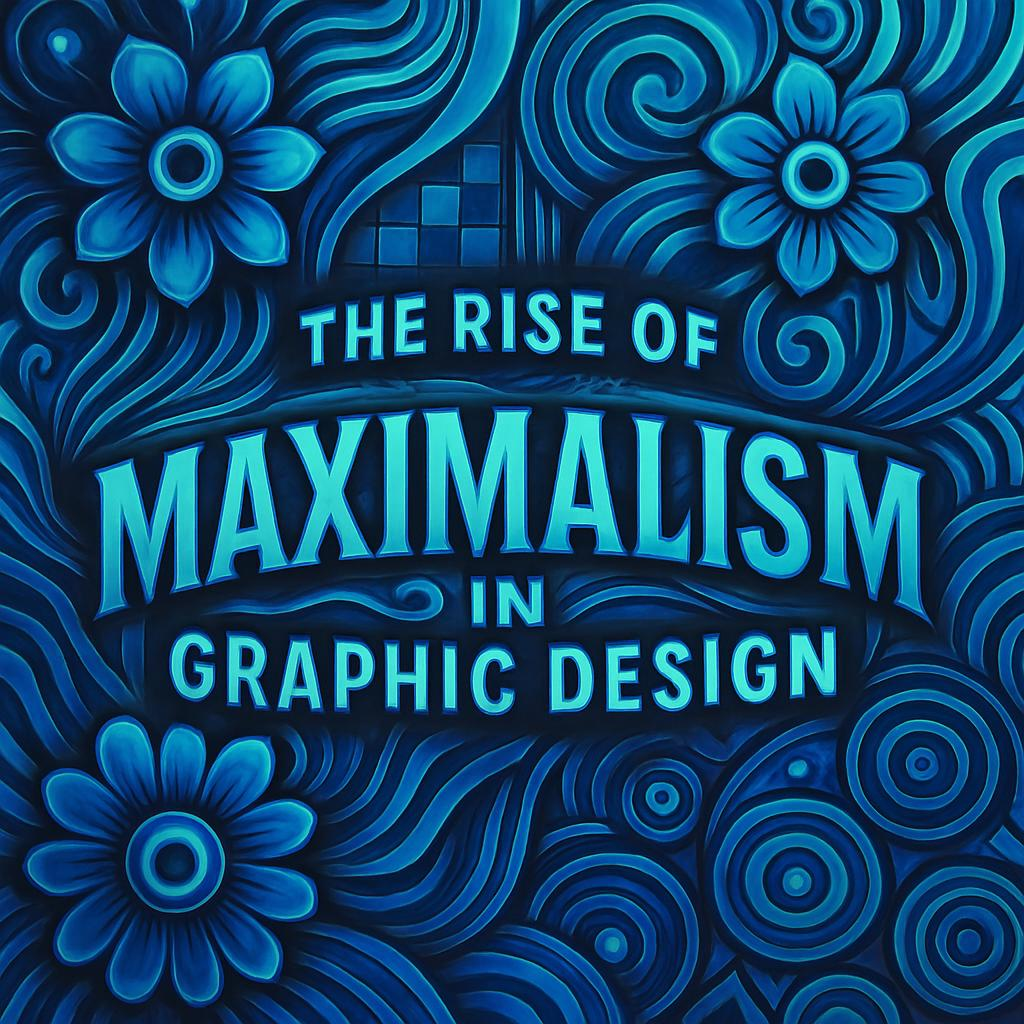Alright, buckle up buttercups, because we're about to dive headfirst into a world where "less is more" has officially taken a backseat! Forget those m
Alright, buckle up buttercups, because we’re about to dive headfirst into a world where “less is more” has officially taken a backseat! Forget those minimalist whispers; we’re cranking up the volume and celebrating the glorious return of maximalism design in the realm of graphic design trends. Get ready for a visual feast of bold patterns, vibrant colors, and deliciously intricate details that are making a serious comeback.
Out with the Outlines, In with the Overload: The Maximalist Resurgence
For years, sleek lines and muted palettes reigned supreme. Minimalism, with its elegant simplicity, held a tight grip on the design world. But like any pendulum, the creative landscape is swinging back, and this time, it’s landing squarely in the camp of more, more, MORE! We’re witnessing a vibrant resurgence of maximalism in graphic design, a movement that fearlessly embraces abundance and throws caution (and negative space) to the wind.
Think of it as the design world saying, “You know what? We’ve had our fill of quiet contemplation. Let’s have a party!” This isn’t just about throwing a bunch of random elements together; it’s a deliberate and artful layering of textures, colors, and patterns to create a rich, immersive, and often delightfully chaotic visual experience. Why the shift? Perhaps it’s a reaction to the digital fatigue of endless scrolling through similar clean interfaces. Maybe it’s a yearning for more personality and expressive freedom in a world saturated with uniformity. Whatever the reason, the rise of maximalism in graphic design is undeniable, and it’s bringing a whole lot of fun with it.

Diving Deep: The Key Ingredients of Maximalist Graphic Design
So, what exactly makes a design scream “maximalist”? It’s not just about being busy; it’s about the intentional use of several key ingredients:
1. A Riot of Vibrant Color Design:
Forget subtle gradients and monochromatic schemes. Maximalism throws open the paintbox and revels in a symphony of hues. Think clashing jewel tones, unexpected neon pops, and rich, saturated shades all vying for attention. Imagine a poster for a music festival bursting with electric blues, fiery oranges, and deep purples, all harmoniously (or perhaps deliberately disharmoniously) coexisting. This fearless use of color injects energy and personality into designs, making them instantly eye-catching.
2. The Boldness of Bold Graphic Design Patterns:
Stripes? Florals? Geometric shapes? Animal prints? Why choose one when you can have them all? Maximalism embraces a playful collision of patterns, often in varying scales and textures. Picture a brand identity that layers a delicate floral illustration over a bold geometric background, punctuated by a playful polka dot detail. This layering creates visual depth and intrigue, inviting the viewer to explore the intricacies of the design.
Alright, buckle up buttercups, because we’re about to dive headfirst into a world where “less is more” has officially taken a backseat! Forget those minimalist whispers; we’re cranking up the volume and celebrating the glorious return of maximalism design in the realm of graphic design trends. Get ready for a visual feast of bold patterns, vibrant colors, and deliciously intricate details that are making a serious comeback.
Out with the Outlines, In with the Overload: The Maximalist Resurgence
For years, sleek lines and muted palettes reigned supreme. Minimalism, with its elegant simplicity, held a tight grip on the design world. But like any pendulum, the creative landscape is swinging back, and this time, it’s landing squarely in the camp of more, more, MORE! We’re witnessing a vibrant resurgence of maximalism in graphic design, a movement that fearlessly embraces abundance and throws caution (and negative space) to the wind.
Think of it as the design world saying, “You know what? We’ve had our fill of quiet contemplation. Let’s have a party!” This isn’t just about throwing a bunch of random elements together; it’s a deliberate and artful layering of textures, colors, and patterns to create a rich, immersive, and often delightfully chaotic visual experience. Why the shift? Perhaps it’s a reaction to the digital fatigue of endless scrolling through similar clean interfaces. Maybe it’s a yearning for more personality and expressive freedom in a world saturated with uniformity. Whatever the reason, the rise of maximalism in graphic design is undeniable, and it’s bringing a whole lot of fun with it.
Diving Deep: The Key Ingredients of Maximalist Graphic Design
So, what exactly makes a design scream “maximalist”? It’s not just about being busy; it’s about the intentional use of several key ingredients:
1. A Riot of Vibrant Color Design:
Forget subtle gradients and monochromatic schemes. Maximalism throws open the paintbox and revels in a symphony of hues. Think clashing jewel tones, unexpected neon pops, and rich, saturated shades all vying for attention. Imagine a poster for a music festival bursting with electric blues, fiery oranges, and deep purples, all harmoniously (or perhaps deliberately disharmoniously) coexisting. This fearless use of color injects energy and personality into designs, making them instantly eye-catching.
2. The Boldness of Bold Graphic Design Patterns:
Stripes? Florals? Geometric shapes? Animal prints? Why choose one when you can have them all? Maximalism embraces a playful collision of patterns, often in varying scales and textures. Picture a brand identity that layers a delicate floral illustration over a bold geometric background, punctuated by a playful polka dot detail. This layering creates visual depth and intrigue, inviting the viewer to explore the intricacies of the design.
3. The Allure of Intricate Details:
Forget clean, minimalist icons. Maximalism thrives on ornamentation and detail. Think elaborate illustrations, hand-drawn elements, intricate typography, and decorative flourishes. Imagine a website design that incorporates ornate borders, detailed botanical illustrations, and textured backgrounds, creating a sense of opulence and craftsmanship. These details add a tactile and human touch to digital designs, making them feel more engaging and less sterile.
4. Embracing Texture and Dimension:
While often executed digitally, maximalist graphic design inspiration draws heavily from tactile experiences. Think about incorporating the illusion of texture through layered graphics, subtle gradients that mimic depth, and even the suggestion of physical materials. This adds another layer of sensory engagement, making the design feel richer and more immersive.
Why Now? The Forces Fueling the Maximalist Movement
The resurgence of maximalism isn’t happening in a vacuum. Several factors are contributing to its rise:
A Desire for Authenticity and Individuality: In a world of mass-produced aesthetics, maximalism offers a powerful way to stand out and express a unique brand or artistic voice. It allows for more personality and storytelling through visual abundance.
The Influence of Digital Culture: The internet and social media have exposed us to a constant stream of diverse visuals. This visual saturation might be fueling a desire for designs that are inherently attention-grabbing and visually stimulating. Think of the visually rich and often chaotic aesthetic of platforms like Instagram, which can inadvertently normalize and even celebrate visual complexity.
A Rejection of Design Dogma: Every so often, the design world feels the need to break free from established rules. After years of minimalist dominance, designers are eager to experiment with bolder and more expressive approaches. Maximalism offers that creative liberation.
Cultural Shifts and Nostalgia: Trends often cycle, and we’re seeing a renewed appreciation for vintage styles, ornate aesthetics, and a general sense of embracing “more” in various aspects of life. This cultural shift naturally spills over into the design world. Imagine the influence of vibrant cultural aesthetics from around the world finding their way into mainstream design.
Navigating the Noise: Effective Maximalist Design
While maximalism celebrates abundance, it’s crucial to remember that effective maximalist graphic design isn’t just about throwing everything at the wall and seeing what sticks. It requires a keen eye for balance, hierarchy, and intentionality. Here are a few key considerations:
Establish a Visual Hierarchy: Even with numerous elements, guide the viewer’s eye to the most important information through strategic placement, scale, and contrast.
Create Anchors: Use a unifying element, such as a consistent color palette or a recurring motif, to tie the disparate elements together and prevent the design from feeling chaotic.
Know When to Stop (Almost!): While the ethos is “more,” there’s still a fine line between delightful abundance and overwhelming clutter. Experimentation and iteration are key.
Consider Your Audience and Brand: Maximalism isn’t suitable for every brand or message. Consider whether its bold and expressive nature aligns with your target audience and brand identity. For a playful, creative brand, it could be a perfect fit, while a more traditional or serious brand might opt for a more restrained approach.
The Bold Future of Visual Storytelling
The rise of maximalism in graphic design signals an exciting shift towards bolder, more expressive, and visually rich forms of communication. It’s a reminder that design can be playful, adventurous, and unapologetically vibrant. By embracing bold patterns, a kaleidoscope of vibrant colors, and intricate details, designers are crafting immersive experiences that capture attention and leave a lasting impression.
So, what’s your take? Are you ready to dive into the delightful chaos of maximalism? We encourage you to experiment, push boundaries, and let your creativity run wild. Embrace the “more is more” mantra and explore the exciting possibilities that this vibrant trend has to offer. Share your own maximalist graphic design inspiration and let’s celebrate the beautiful abundance of visual expression together!

COMMENTS